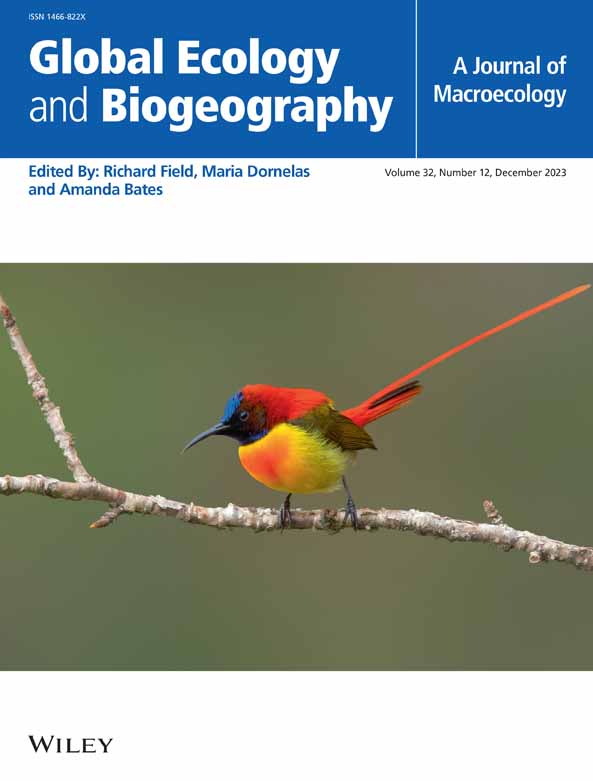Bridging Macroecology and Temporal Dynamics to Better Attribute Global Change Impacts on Biodiversity
Abstract
Context
The ongoing biodiversity crisis presents a complex challenge for ecological science. Despite a consensus on general biodiversity decline, identifying clear trends remains difficult due to variability in data, methodologies and scales of analysis.
Ideas
To enhance our understanding of ongoing biodiversity changes and address discrepancies in biodiversity trend detection, we propose integrating macroecological theory with temporal and trait-based perspectives. First, analysing temporal changes in diversity scaling relationships, such as species accumulation curves or distance decay, can reconcile and synthesise conflicting observations of biodiversity change, enabling quantification of diversity shifts from local to regional spatial scales. Second, diversity patterns across scales are linked to three proximate components: abundance, evenness and spatial aggregation of species. Investigating temporal changes in these components provides deeper insights into how human activities directly influence biodiversity trends. Third, incorporating species traits into the analysis of these macroecological patterns improves our understanding of human impacts on biodiversity by elucidating the links between species characteristics and their responses to environmental changes.
Case Study
We illustrate this integration in a case study of forest and farmland birds in France, highlighting how studying diversity changes across scales, and decomposing temporal change in different components can help to elucidate the mechanisms driving diversity change.
Conclusions
We discuss the limitations and challenges of this integrative approach and highlight how it offers a comprehensive framework for understanding the drivers of biodiversity change across scales. This framework facilitates a more nuanced understanding of how human activities impact biodiversity, ultimately paving the way for more informed actions to mitigate biodiversity loss across spatial and temporal scales.

 求助内容:
求助内容: 应助结果提醒方式:
应助结果提醒方式:


